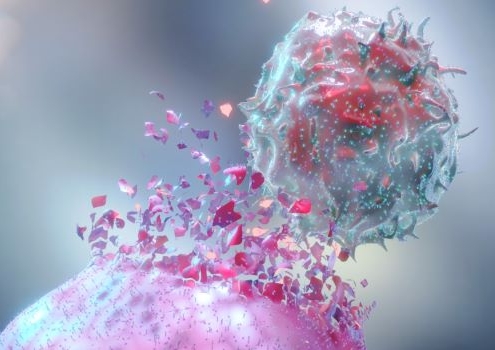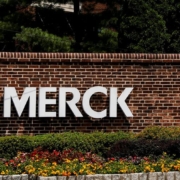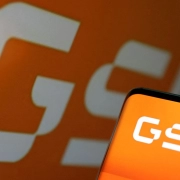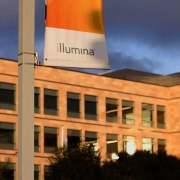World Cancer Research Day highlights innovation in immuno-oncology
World Cancer Research Day highlights innovation in immuno-oncology
Published: Sep 29, 2022
By Christie Adams and Hayley Shasteen
BioSpace
Immunotherapy, or immuno-oncology, is ushering in hopes of more effective, gentler cancer care, in which the patient’s own body is programmed to destroy cancerous cells. In honor of World Cancer Research Day, Sept. 24, BioSpace spoke with leaders from Elevation Oncology, Janssen, Merck and Teclison to learn more about the latest innovations.
Elevation Targets NRG1 Fusions
Elevation Oncology is leveraging genomic research for true oncogenic driver alterations with a druggable pathway in the treatment of solid tumors.
Shawn Leland, founder and CEO, explained his company’s approach with lead asset seribantumab, an IgG2 monoclonal antibody designed to stop the human epidermal growth factor receptor 3 (HER3) signaling that sustains tumors harboring Neuregulin 1 (NRG1) gene fusions.
“These gene fusions are embedded within the cell surface,” Leland said. “They signal by secreting NRG1, which is the primary pathway for HER3, and then obviously the ER-HR3 monoclonal antibody. So, it has the ability to block NRG1 binding to HER3.”
This starts a chain reaction that can prevent tumor growth.
“It allows us to knock down downstream signaling through the…MAP kinase pathway which in NRG1 fusions leads to tumor growth and proliferation,” Leland said.
In May, Elevation reported positive proof-of-concept data from the Phase II CRESTONE study evaluating seribantumab in patients with advanced solid tumors with NRG1 gene fusions.
The study showed a 33% overall response rate across solid tumors and a 36% ORR among the cohort of non-small cell lung cancer patients, Leland said.
Better still, seribantumab demonstrated a “92% disease control rate, with every patient seeing tumor shrinkage except for one patient,” he added.
Long-term, “We would love to build an industry-leading precision oncology company at Elevation,” Leland said.
Janssen vs. Multiple Myeloma
Mark Wildgust, Ph.D., vice president of global medical affairs, oncology at Janssen, said the company has made hopeful leaps forward in the battle against multiple myeloma. With the development of two new therapeutic programs, Janssen could soon specifically target and destroy myeloma cells alone.
Both teclistamab, a BCMAxCD3 bispecific antibody and talquetamab, an off-the-shelf T cell redirecting bispecific antibody, work by identifying malignant antigens in plasma cells.
In clinical tests, both have shown the ability to identify B-cell maturation antigens (BCMAs), on the surface of T cells.
“This means we’re able to bring the T cell right to the proximity of myeloma cells that express BCMA, resulting in T cell activation and then subsequently the killing of those myeloma cells,” Wildgust said.
Janssen is excited about the company’s positive results in targeting the lineage target antigen GPRC5D, Wildgust added. This antigen also expresses itself on the surface of T cells and is a telltale indicator of the presence of myeloma.
“In preclinical studies, we’ve seen really effective killing of myeloma cells that express GPRC5D,” he shared. “We’re also seeing really encouraging data, even to the point that FDA has now granted talquetamab breakthrough [therapy] designation as well.”
Janssen received conditional marketing authorization in Europe for teclistamab in relapsed or refractory multiple myeloma in August.
“We’re now seeing response rates of 60% or more in this in this refractory setting. On top of that, I think we’re also seeing really good progression-free survival rates as well. I think in the future it’s going to become a really important clinical option for patients,” Wildgust said.
Merck’s Work with VHL Pathways
With more than 20 novel mechanisms, Merck’s pipeline has the potential to serve up multiple breakthrough cancer treatments. Some of these products could bring a sea change from traditional chemotherapy treatments to less toxic immunotherapy treatments.
Eric Rubin, senior vice president, clinical oncology, said Merck took care to observe diverse mechanisms in the lab, making note of any activity on compounds.
“This led to observing both immune targeted treatments as well as non-immune, and we let the science lead us as to what to pursue,” Rubin said.
Specifically, Rubin said Merck’s research on the dysregulation of von Hippel-Lindau (VHL) pathways, which ultimately led to a Nobel Prize for the company, helped uncover new treatments for certain kidney cancers. From there, Merck was able to develop treatments for other VHL-associated cancers.
“That’s why following the science, understanding how cancer is caused, can lead to very effective treatments that are not classical chemotherapy-based treatments,” Rubin said.
Rubin shared that Merck is excited about Anti-TIGIT therapy vibostolimab, which has been shown to improve upon the efficacy of blockbuster Keytruda, an immunotherapy that blocks certain cancers from using the PD-1 pathway.
The combination is currently being assessed in combination with concurrent chemoradiotherapy vs. concurrent chemoradiotherapy with durvalumab in patients with Stage III NSCLC.
“I think as the field moved to where we had a better understanding of what drives cancer, it enabled us to try to pick agents that were more specific for the cancer and maybe less toxic,” Rubin said.
Teclison’s TATE Therapy
Teclison’s platform for targeting cancer is, so far, one of a kind. The New Jersey-based company is working on a compound which induces necrosis in solid tumors and activates the body’s immune system in the process.
Ray Lee, M.D., Ph.D., founder and CEO, explained how the compound has a unique mechanism called a hypoxia-activating agent.
“In order to do this, we actually create a so-called ‘synthetic lethality,” he said. “By depriving the tumor of oxygen, a hypoxic reaction (oxygen deprivation) sets in and the tumor begins to necrotize. Once that happens, this also triggers the body to send macrophage dendritic cells to destroy the necrotized cancer cells.”
Teclison published a peer-reviewed study in June demonstrating the safety, tolerability and preliminary efficacy of its trans-arterial tirapazamine chemoembolization (TATE) therapy.
The TATE therapy and lead therapeutic agent, TEC-001, are being studied in combination with FDA-approved immune checkpoint inhibitors in Phase II for the treatment of liver, colorectal and lung cancer.
“It works in a kind of synergistic way,” Lee continued. “One is the synergy between our compound and then the procedure embolization. The second synergy involves converting the tumor into a therapeutic vaccine so that we’ll be able to enhance immunotherapy.”
Lee is hopeful the approach will someday help revolutionize cancer treatment.
“I really don’t see that chemotherapy is the answer for (treatment),” he said. “We’re hoping what works is an immune checkpoint inhibitor. That’s why we’re hoping we can use our strategy to enhance immune checkpoint inhibitors in the future.”
Source: BioSpace











